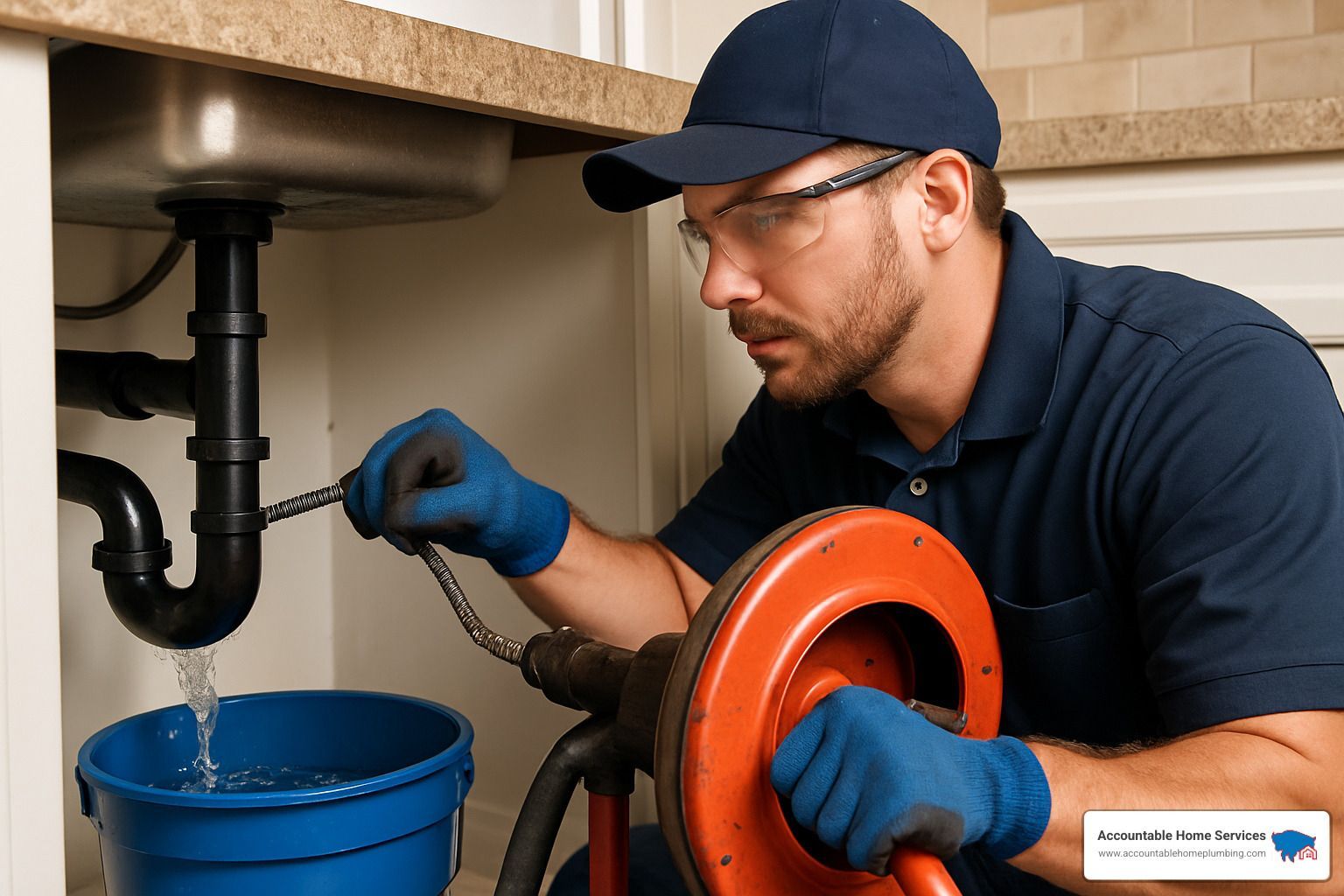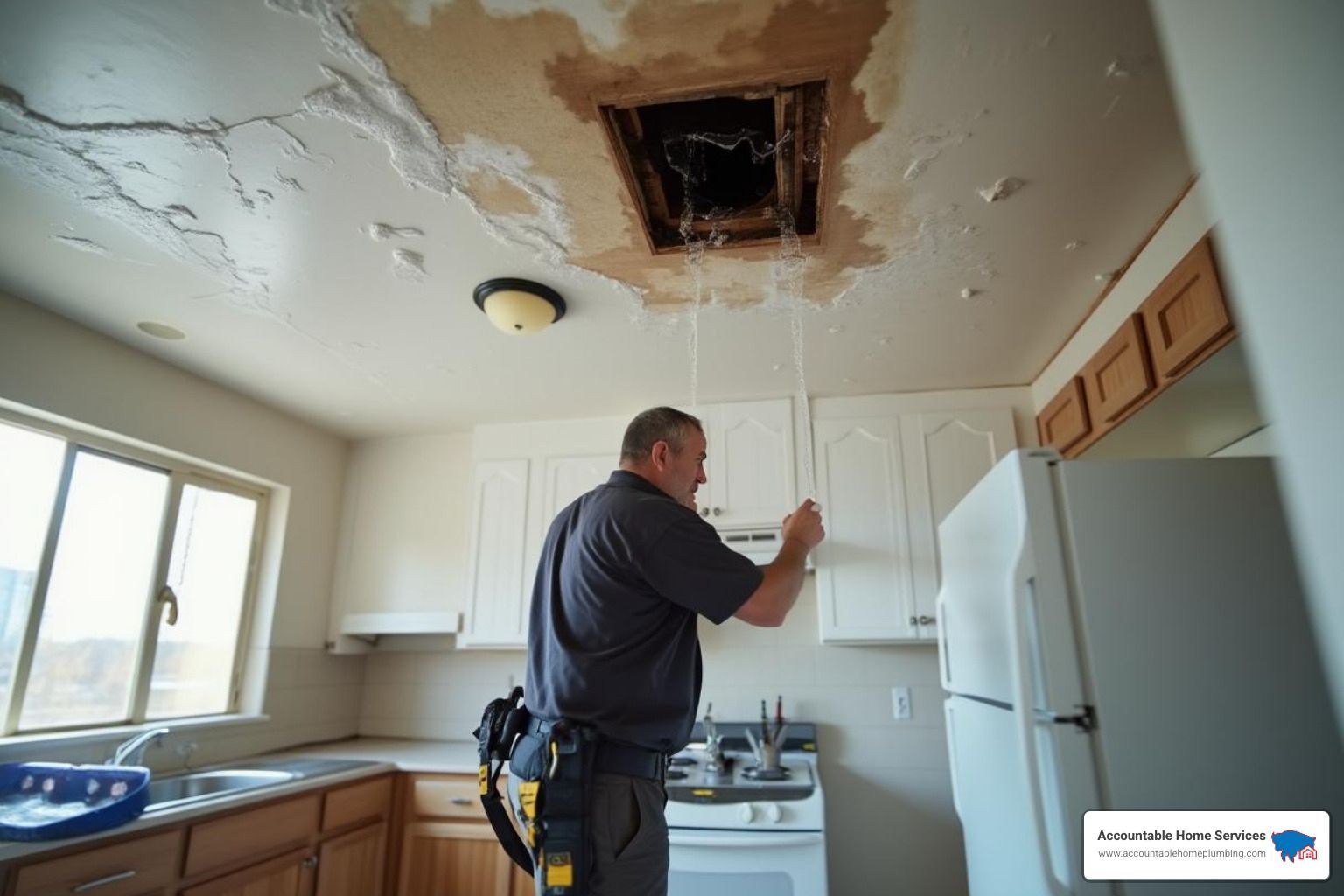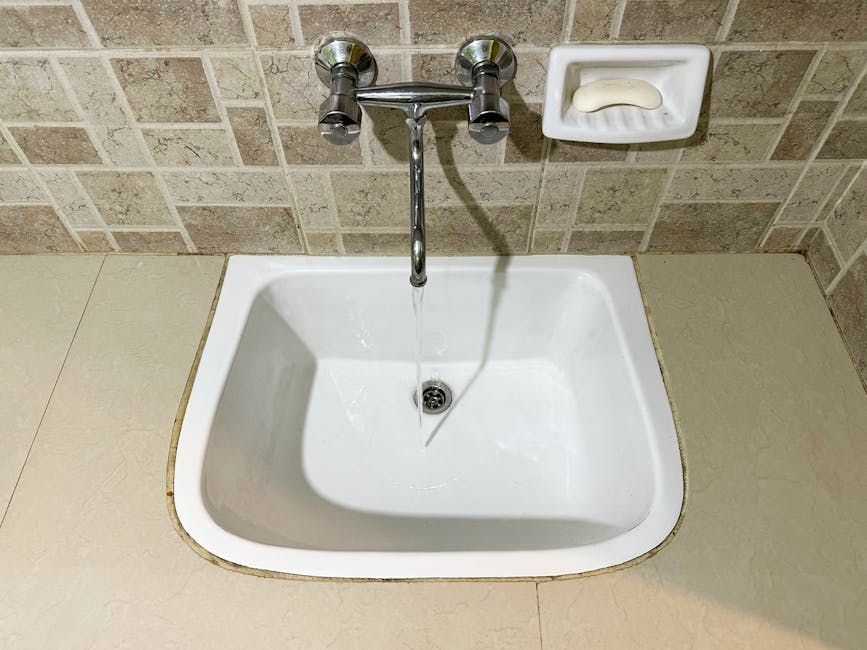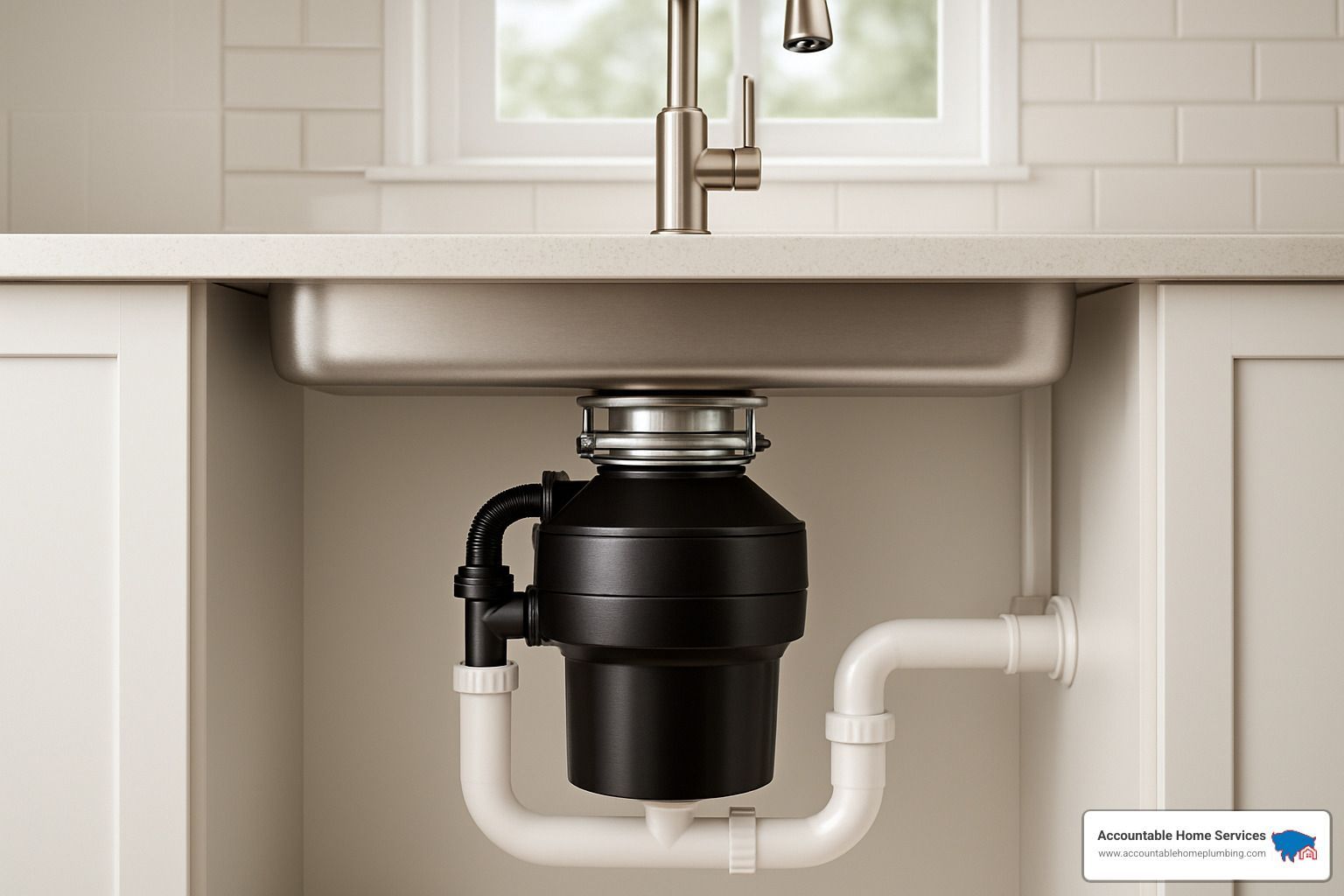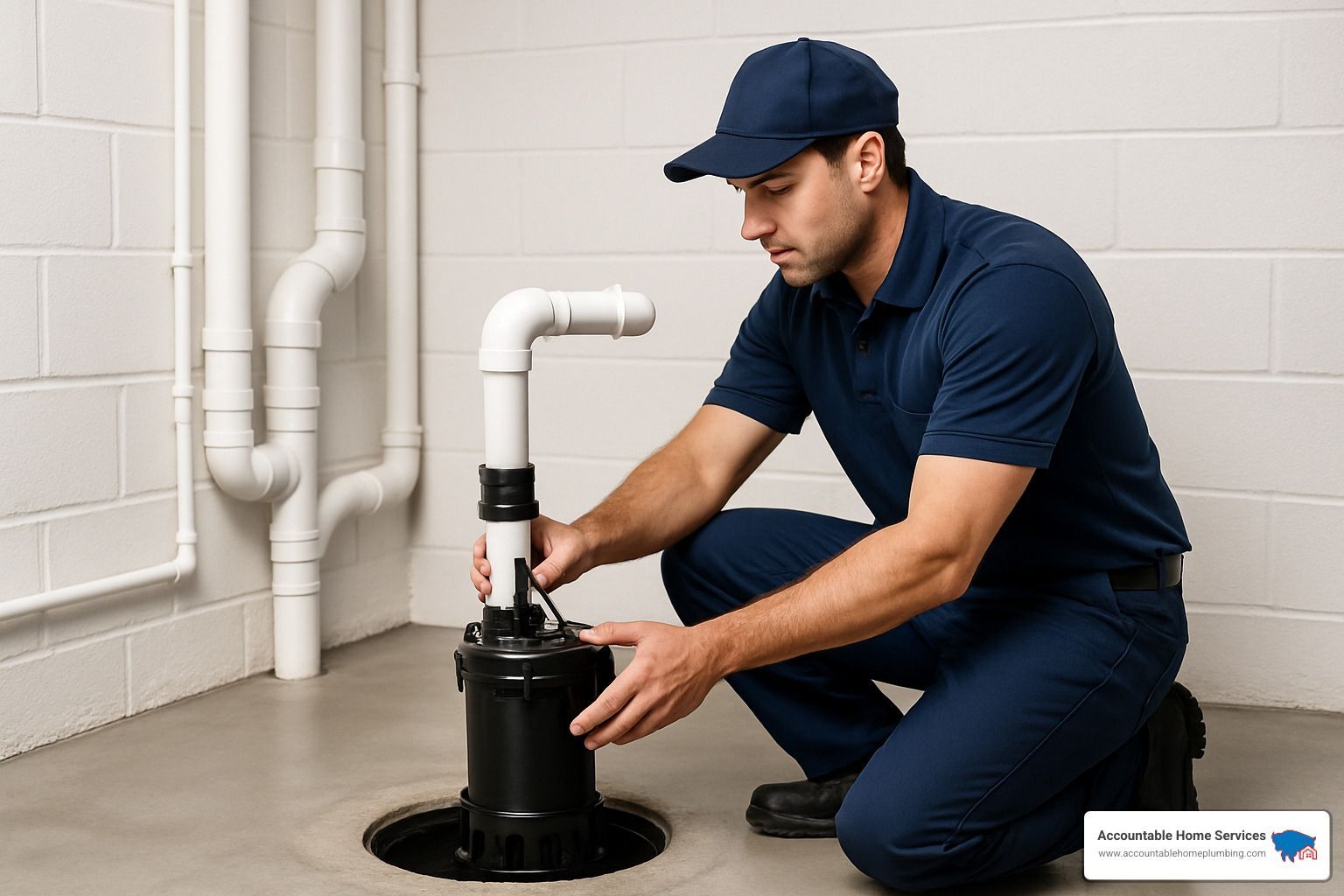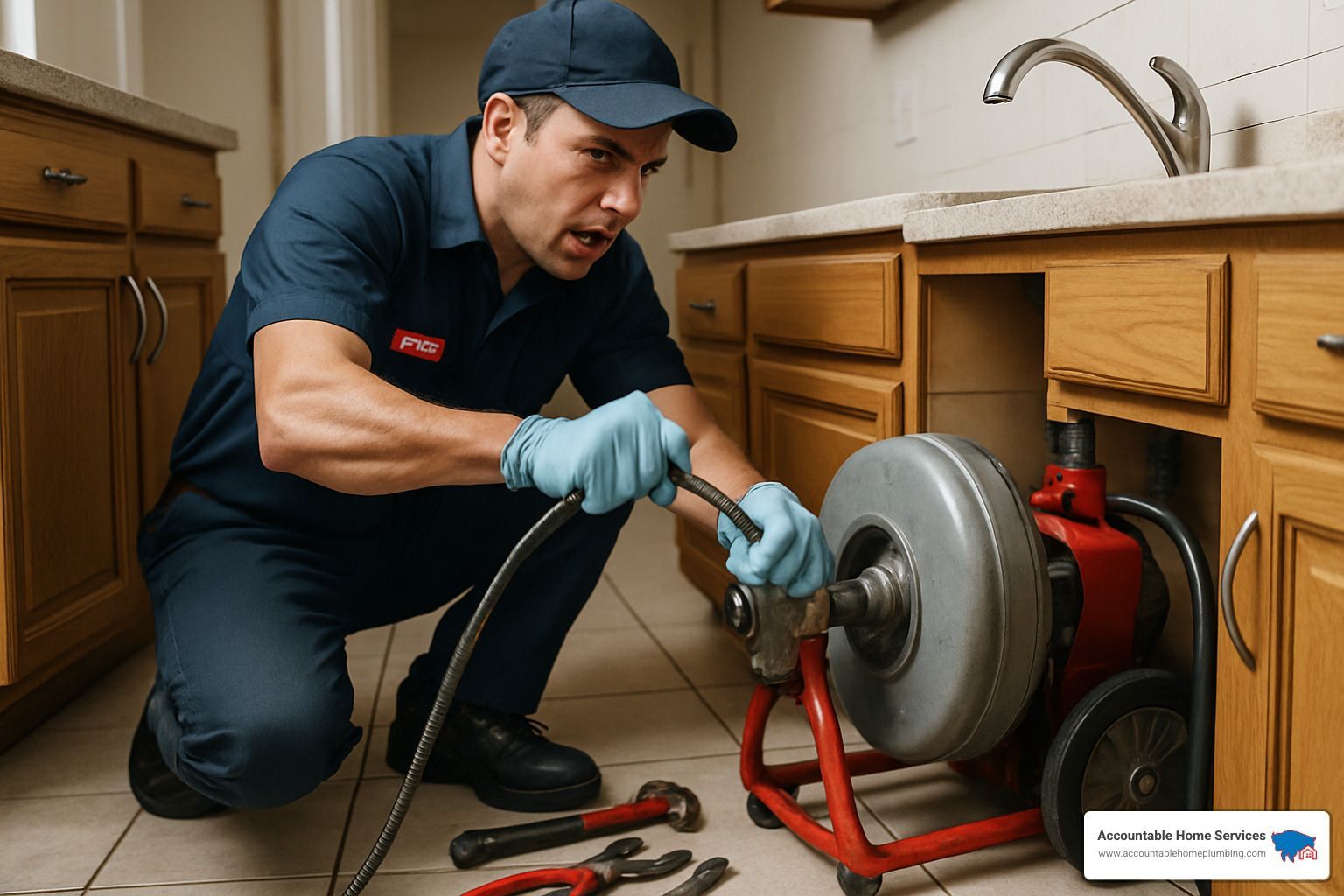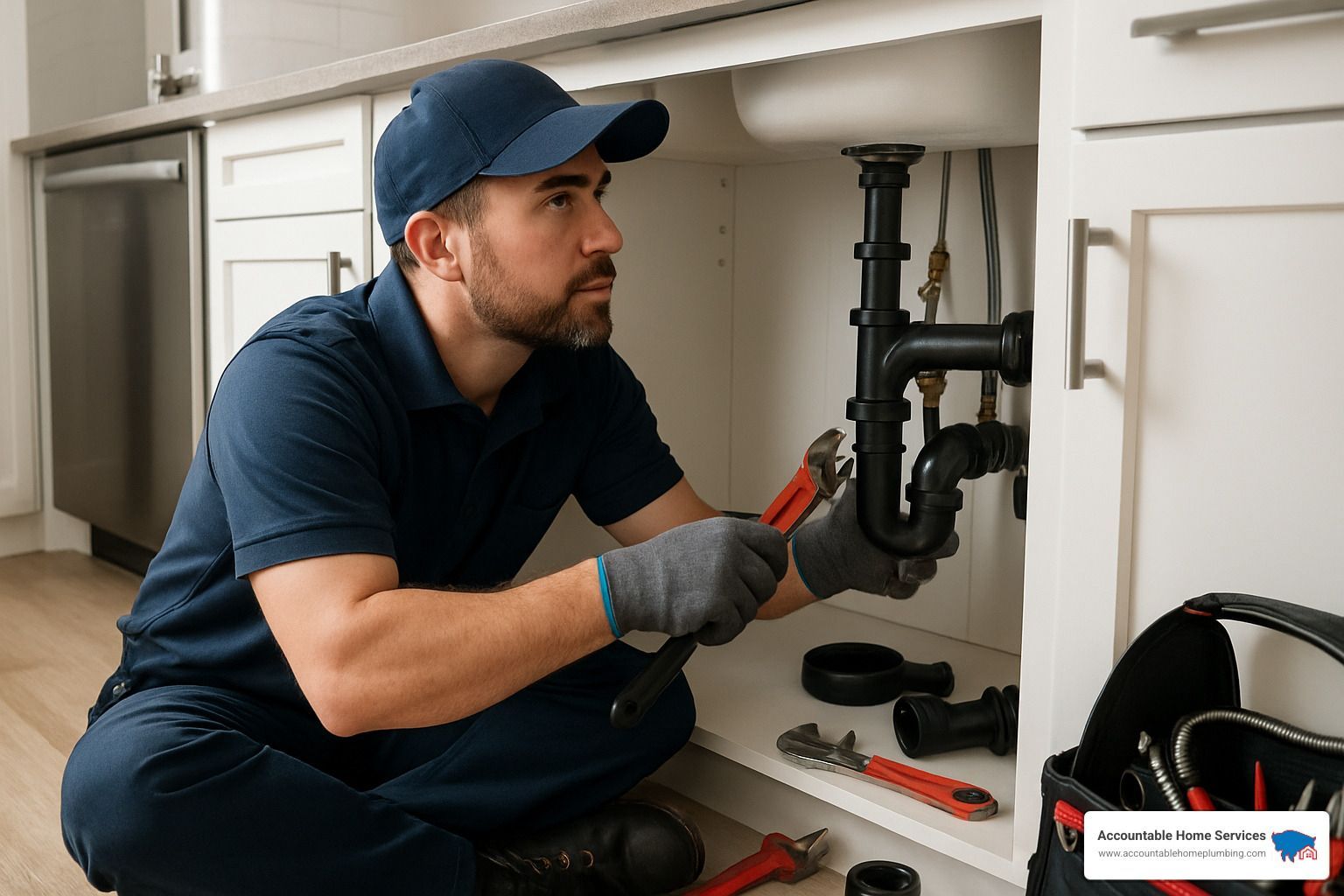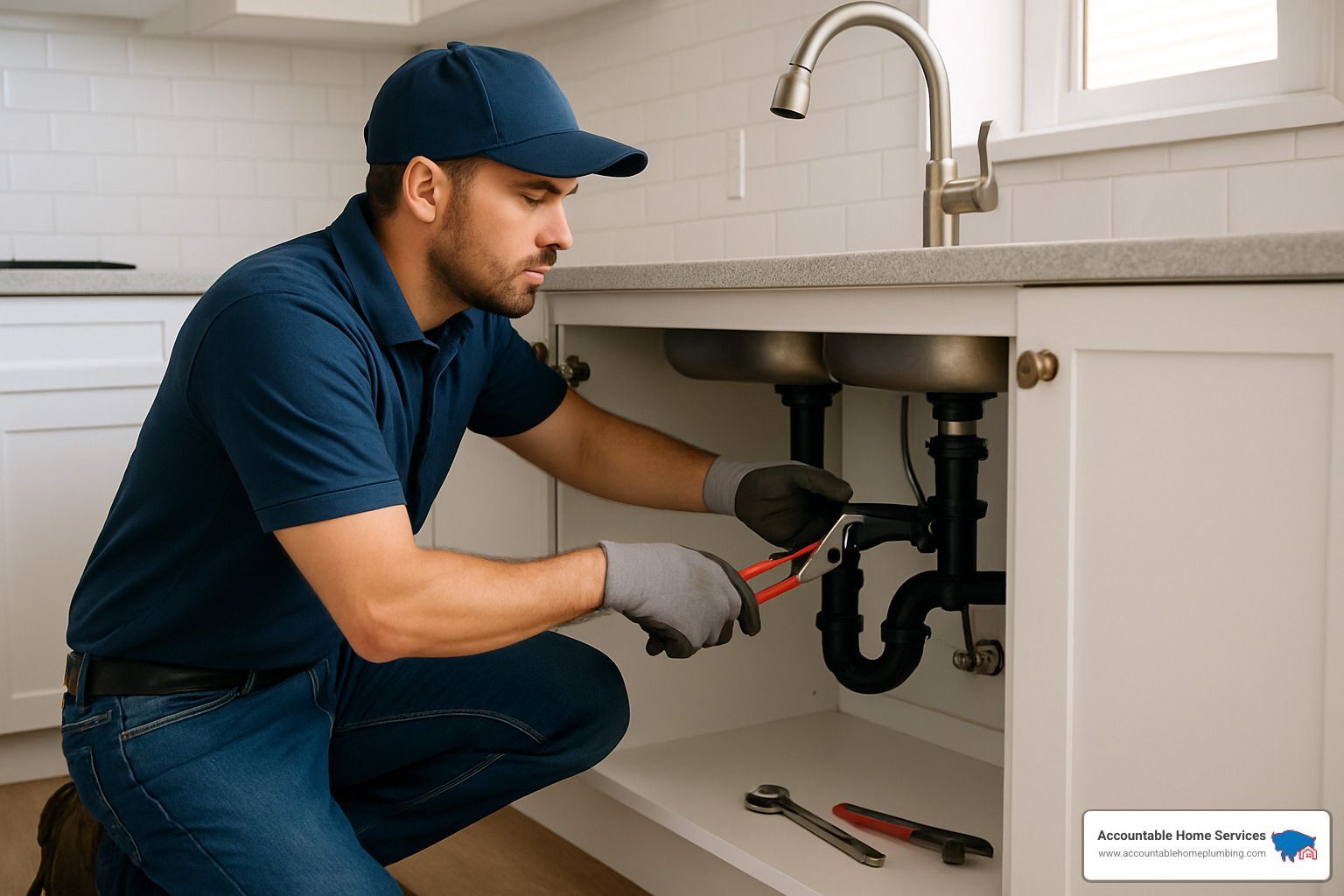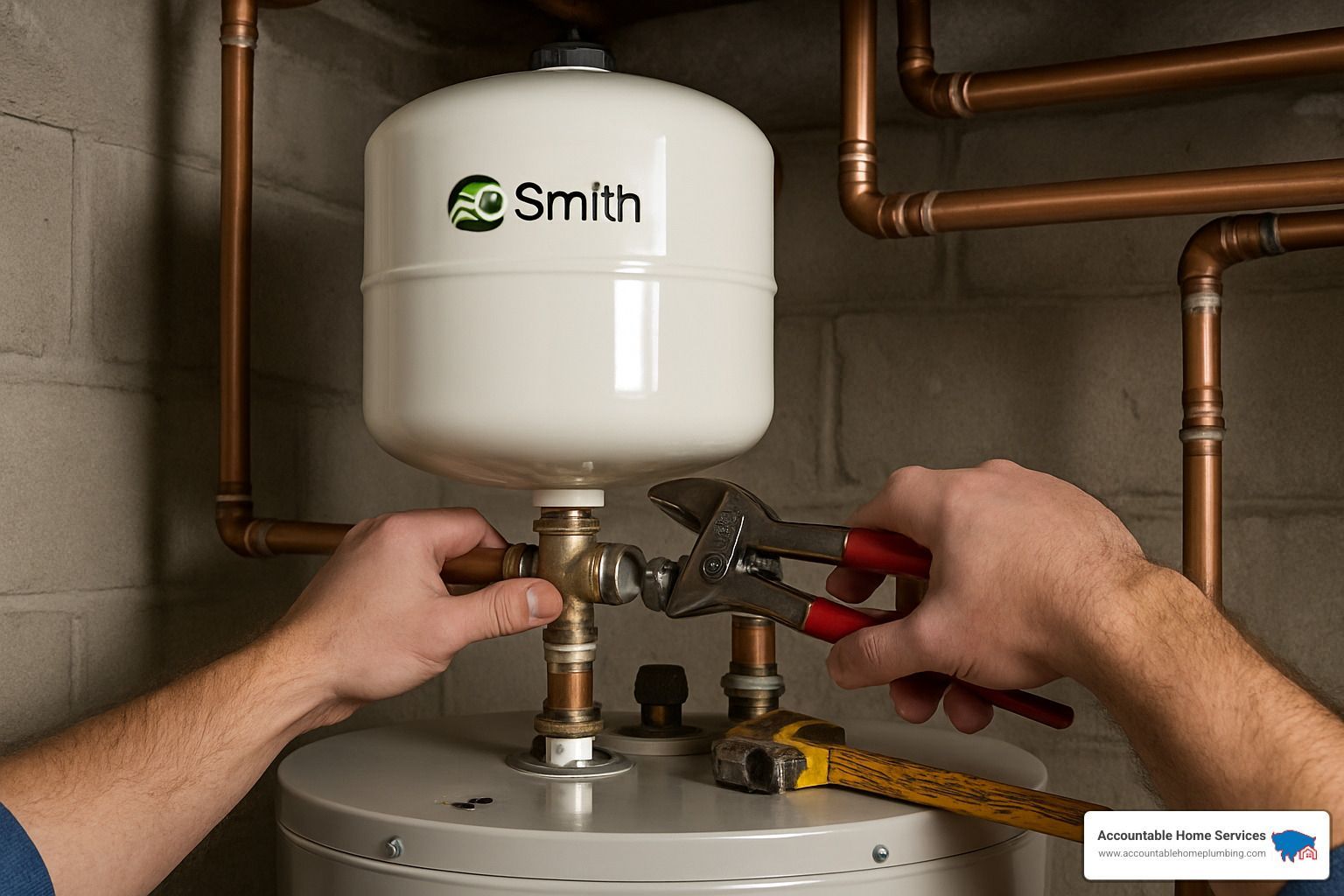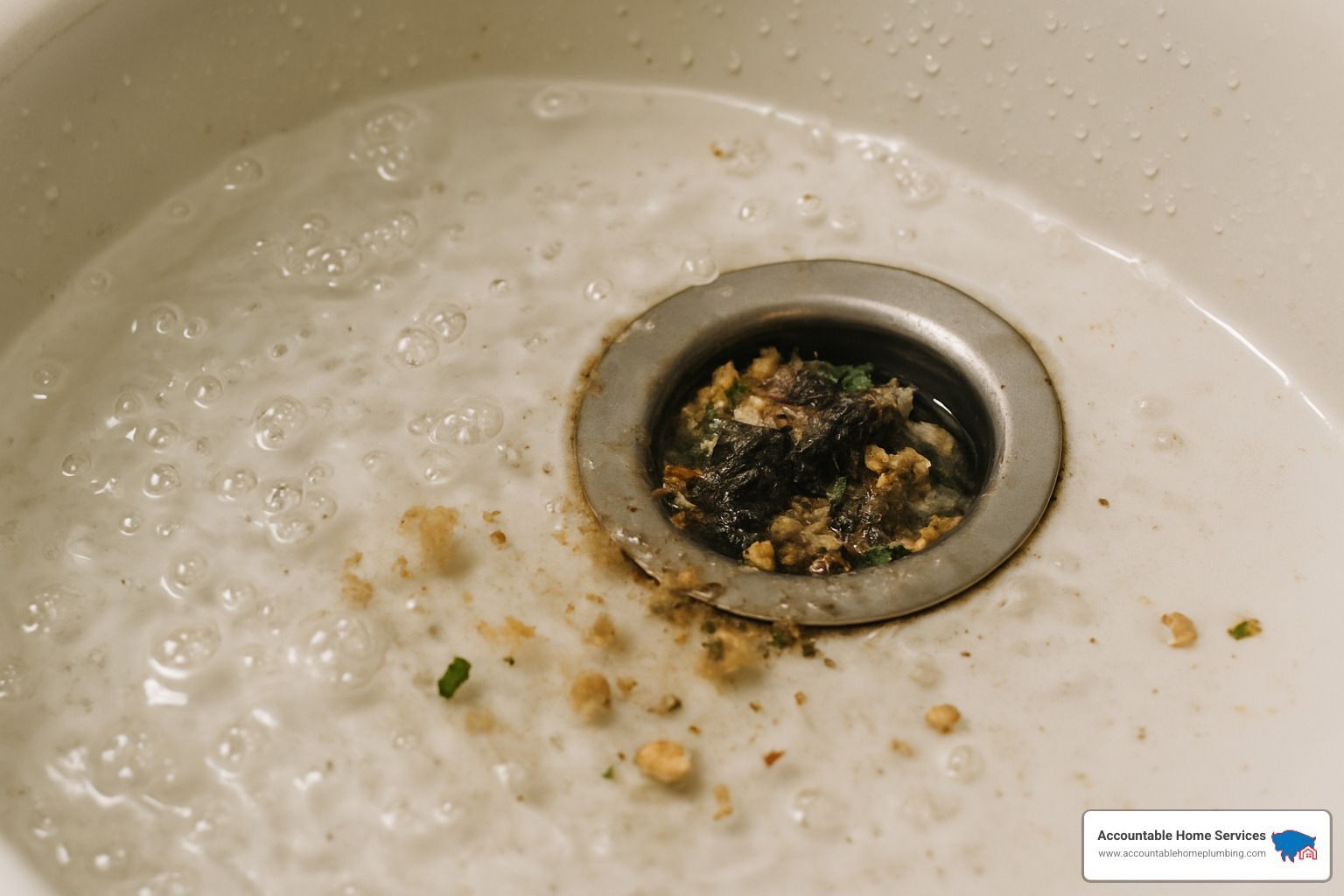Drain the Pain: Best Fixes for Slow Bathtub Drains
Best solution for slow bathtub drain: Start with easy DIY approaches like using baking soda and vinegar, a plunger, or a plastic drain snake to clear the blockage.
A slow-draining tub is more than an annoyance; it often signals underlying plumbing issues. Understanding why your bathtub isn't draining properly can save time and money in the long run. The best solution for slow bathtub drain might be in your own hands, with many DIY fixes being both effective and easy to implement.
Common culprits behind sluggish tub drains include hair and soap scum buildup, foreign objects, and even pipe corrosion. These issues, if left unaddressed, can escalate into bigger plumbing problems.
But don’t worry, we've got you covered with some simple solutions. In this guide, we'll walk you through identifying the cause of your slow drain, exploring some do-it-yourself methods, and knowing when it's time to call in the professionals.
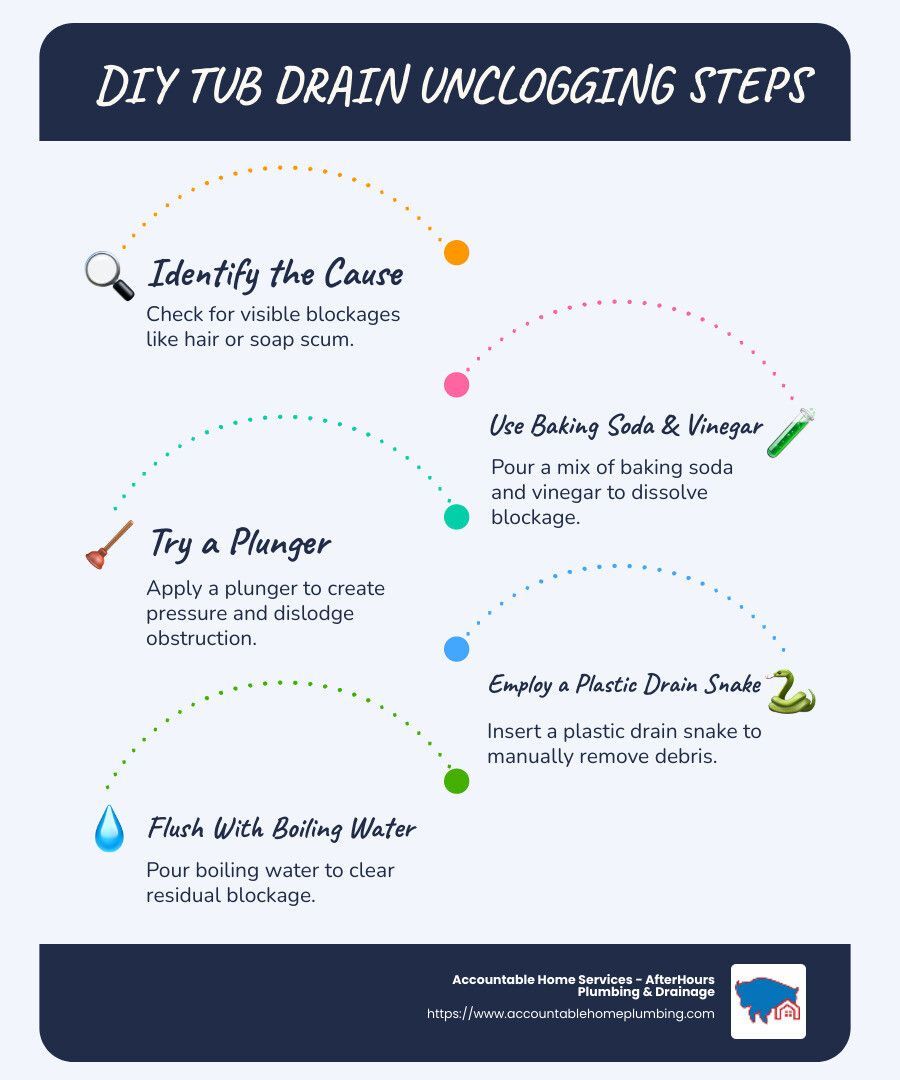
Understanding the Causes of Slow Bathtub Drains
A slow-draining bathtub is often a sign of common clogging issues. Let's break down the usual suspects so you can tackle them head-on.
Hair and Soap Scum
Hair and soap scum are the most frequent offenders when it comes to sluggish drains. As you shower, hair strands and soap residue can accumulate and form a sticky blockage. This typically happens near the drain opening or in the P-trap, making it a prime target for DIY solutions.
Foreign Objects
Sometimes, the cause of your slow drain isn't just hair and soap. Small objects like jewelry, toys, or excessive bath products can slip into the drain unnoticed. These items can get lodged in the drain or P-trap, obstructing water flow. A simple check for foreign objects might just be the best solution for slow bathtub drain issues in your home.
Pipe Corrosion
In older homes, pipe corrosion is a more serious concern. Over time, pipes can rust and accumulate mineral deposits, reducing their diameter and restricting water flow. This isn't something you can easily fix on your own and might require professional intervention to replace the corroded pipes.
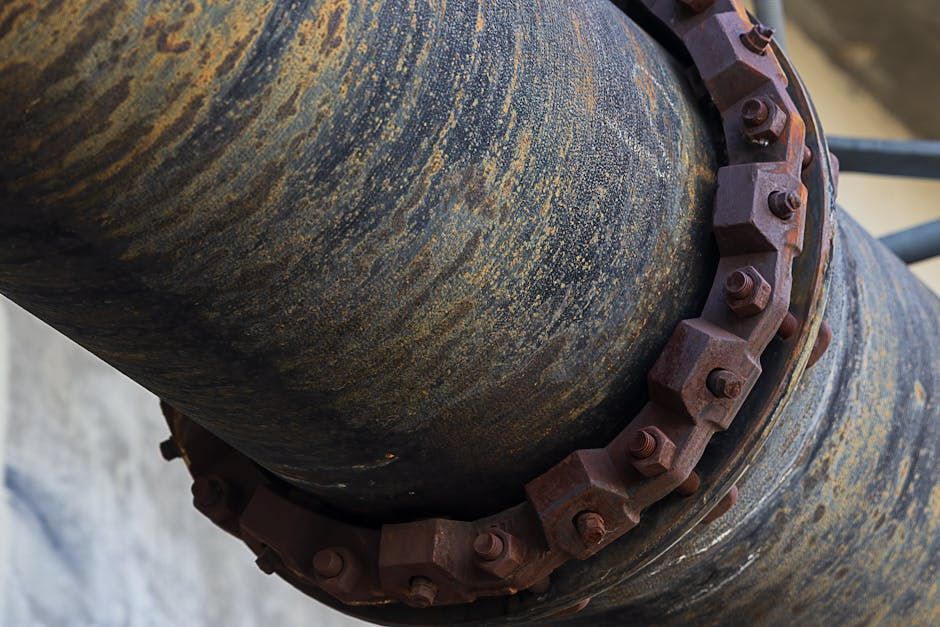
Understanding these common causes can help you decide the next steps in solving your slow bathtub drain problem. Whether it's a simple DIY fix or a job for the pros, knowing the cause is the first step to a clear drain.
Best Solution for Slow Bathtub Drain
When your bathtub drain slows to a trickle, it's time to take action. Here are some of the best solutions for slow bathtub drain issues that you can try at home.
Baking Soda and Vinegar
Baking soda and vinegar are a classic duo for tackling clogs. This method is both natural and effective, making it a popular choice for many homeowners.
- Pour a generous amount of dish soap into the tub drain. This helps break down any grease or soap scum.
- Boil four cups of water using a kettle.
- Slowly pour two cups of boiling water into the drain.
- Add one cup of baking soda, followed by one cup of distilled white vinegar.
- Wait for the fizzing to stop. This reaction helps dislodge the clog.
- Re-boil the remaining two cups of water and flush the drain with it.
This method works well for clogs caused by hair and soap scum buildup.
Plunger
A plunger isn't just for toilets. It's also an effective tool for bathtub drains.
- Remove the drain stopper to expose the drain.
- Fill the tub with a small amount of water to cover the plunger's cup.
- Place the plunger over the drain and push down firmly, then pull up quickly.
- Repeat several times to create suction and dislodge the clog.
The plunger method is great for clogs caused by foreign objects or minor blockages.
Plastic Drain Snake
For hair clogs near the drain's surface, a plastic drain snake is your best friend. This inexpensive tool can be a game-changer.
- Remove the drain stopper and set it aside.
- Insert the plastic drain snake into the drain until you feel resistance.
- Slowly pull the snake out to remove any hair or debris.
- Repeat if necessary until the snake comes out clean.
This method targets hair and soap scum clogs effectively, especially when they are near the drain opening.
By using these DIY solutions, you can often clear slow drains without calling a professional. However, if these methods don't work, it might be time to explore more advanced options or seek expert help.
DIY Methods to Unclog Your Bathtub
When your bathtub is draining slowly, you don't always need to call in a pro right away. There are simple DIY methods you can try first to get things flowing smoothly again.
Plunger Method
The humble plunger is not just for toilets. It can be a powerful tool for unclogging bathtub drains too.
- Remove the drain cover to expose the drain opening.
- Add a bit of water to the tub, just enough to cover the plunger’s cup.
- Place the plunger over the drain, ensuring a tight seal.
- Push down and pull up quickly several times to create suction.
- Check if the water drains faster. Repeat if necessary.
This method is great for minor clogs caused by foreign objects or small blockages.
Boiling Water
Boiling water is another simple yet effective way to tackle clogs, especially those caused by soap scum or grease.
- Boil a kettle full of water.
- Carefully pour the boiling water directly down the drain in stages.
- Pause between pours to let the hot water work its magic on the clog.
- Repeat as necessary until the drain clears.
This method helps break down soap scum and grease buildup, making it a handy solution for slow drains.
Manual Hair Removal
Hair clogs are a common culprit for slow drains, and sometimes you just need to get in there and pull them out manually.
- Remove the drain cover or stopper.
- Use a flashlight to inspect the drain for visible hair or debris.
- With gloves on, reach into the drain and remove any visible hair.
- Use a plastic drain snake to reach deeper clogs if necessary.
- Flush with hot water to ensure the drain is clear.
Manually removing hair can be surprisingly effective, especially for recent build-ups near the drain opening.
These DIY methods can often solve the problem of a slow-draining bathtub without the need for professional help. However, if the problem persists, it may be time to consider more advanced solutions or consult a professional.
Chemical Solutions and When to Use Them
When DIY methods aren't enough, chemical removers might be your next step for dealing with a slow bathtub drain. These products are powerful and effective but require careful handling.
Types of Chemical Removers
- Hydrochloric Acid: This is a potent chemical often found in commercial drain cleaners. It's effective at breaking down tough clogs, but it must be used with caution due to its corrosive nature.
- Caustic Soda (Sodium Hydroxide): This substance works by dissolving organic material, making it a popular choice for hair and soap scum clogs.
- Sulfuric Acid: Another strong option, sulfuric acid can clear stubborn clogs quickly. However, it can be harmful if not used correctly.
Safety Precautions
Before using any chemical remover, it's crucial to follow these safety steps:
- Read the Instructions: Always review the product's instructions carefully. Each chemical has specific guidelines for safe use.
- Ventilate the Area: Open windows and doors to ensure good airflow. This helps disperse any harmful fumes.
- Wear Protective Gear: Use gloves, goggles, and a face mask to protect your skin and eyes from splashes and fumes.
- Never Mix Chemicals: Mixing different chemical removers can cause dangerous reactions and damage your pipes.
When to Use Chemical Removers
Chemical solutions should be a last resort after trying DIY methods. They are most effective on clogs caused by organic materials like hair and grease. If your bathtub drain remains slow after using chemical removers, it might be time to call a professional plumber to investigate further.
Preventing Future Clogs
Keeping your bathtub drain flowing smoothly isn't just about fixing clogs; it's about stopping them before they start. Here are some simple steps to help you do just that.
Drain Covers
Drain covers are your first line of defense against clogs. These handy devices catch hair and debris before they enter the drain. They're affordable, easy to install, and can save you a lot of hassle down the line. By preventing hair and other materials from entering your pipes, you'll reduce the chances of slow drainage.
Regular Maintenance
Regular maintenance is key to avoiding slow drains. Here’s a simple routine to keep your bathtub drain in top condition:
- Weekly Flush: Pour hot water down the drain once a week. This helps dissolve soap scum and prevents buildup.
- Monthly Cleaning: Use a mixture of baking soda and vinegar monthly. This natural solution breaks down minor clogs and keeps your pipes fresh.
- Check and Clean Stoppers: Clean your drain stoppers regularly to remove hair and debris that might cause clogs.
Professional Inspections
Even with regular maintenance, some issues may require a professional touch. Scheduling professional plumbing inspections can catch small problems before they become big headaches. A plumber can spot signs of pipe corrosion or other underlying issues that might not be visible to the untrained eye.
Routine inspections can save you money in the long run by preventing major repairs and ensuring your plumbing system stays healthy.
By using drain covers, performing regular maintenance, and getting professional inspections, you can prevent future clogs and keep your bathtub draining smoothly.
Next, let’s tackle some of the most frequently asked questions about slow bathtub drains.
Frequently Asked Questions about Slow Bathtub Drains
How to fix a slow draining bathtub?
Fixing a slow-draining bathtub can be simple if you catch the problem early. One of the most popular DIY solutions is using a combination of baking soda and vinegar. This natural method works well for minor clogs caused by soap scum and hair. Here's how you do it:
- Remove standing water from the tub.
- Pour 1/2 cup of baking soda down the drain.
- Follow with 1/2 cup of white vinegar.
- Cover the drain with a wet cloth and wait for 5–10 minutes.
- Flush with hot water to clear the loosened debris.
For tougher clogs, a plunger can be very effective. Make sure to create a good seal with the plunger and use quick, vigorous plunges to dislodge the blockage.
What is the best product to use for a slow draining bathtub?
When it comes to choosing the best product for a slow-draining bathtub, baking soda and vinegar are highly recommended for their natural and eco-friendly properties. They are safe for your pipes and the environment, making them a great first choice.
For more stubborn clogs, Drano's Max Gel is a popular commercial option. It’s designed to cut through standing water and tackle tough clogs. However, it should be used with caution, as it contains harsh chemicals that can be damaging if used excessively.
Another household item you can try is dish soap. It helps break down greasy build-up in your pipes. Simply pour some dish soap down the drain, followed by boiling water, to help clear minor blockages.
How do plumbers clear blocked drains?
Professional plumbers have tools and expertise to handle more severe clogs. They often use professional drain snakes or augers, which are long, flexible tools that can reach deep into pipes to break up or remove blockages.
Plumbers also rely on their plumbing expertise to diagnose and fix underlying issues that might be causing slow drainage, such as pipe corrosion or misalignment. In some cases, they might use advanced techniques like video inspections to pinpoint the exact location of a blockage.
By understanding these common questions and solutions, you can better manage and prevent slow bathtub drains. In the next section, we'll discuss chemical solutions and when to use them.
Conclusion
Maintaining a smoothly draining bathtub is not just about quick fixes; it's about regular care and knowing when to call in the experts. Accountable Home Services is here to help with all your plumbing needs in the Denver Metro area. Our team provides 24/7 services, specializing in emergency repairs and routine maintenance to keep your plumbing system in top shape.
Regular Maintenance is key to preventing future clogs. Simple habits like using drain covers to catch hair and debris, and scheduling professional inspections, can extend the life of your plumbing system. Weekly flushing with hot water and monthly cleaning with baking soda and vinegar are easy practices that go a long way in maintaining your drains.
However, even with the best care, some issues are best left to the professionals. If you experience persistent problems like multiple slow drains, sewage odors, or suspected pipe damage, it's time to seek professional help. Our experts can diagnose and resolve complex issues, ensuring your plumbing system runs smoothly and efficiently.
For more information on how we can assist you, visit our Drain Cleaning & Sewer Line Services page. With Accountable Home Services, you get upfront pricing and no hidden fees, ensuring reliable and transparent service every time. Keep your drains clear and your mind at ease with our expert help!

